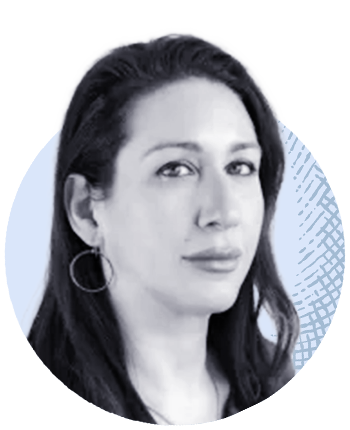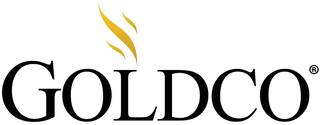Can This 'Buzzy' Investing Strategy Help Grow Your 401(k)?
Money is not a client of any investment adviser featured on this page. The information provided on this page is for educational purposes only and is not intended as investment advice. Money does not offer advisory services.

Big changes are coming to the country's largest pension system. Last week, the board of the California Public Employees' Retirement System (CalPERS) voted to fundamentally change how it manages its nearly $600 billion portfolio on behalf of California public-sector retirees.
CalPERS is abandoning a traditional investment management framework that assigns fixed allocations to different asset types, each of which are managed by separate teams, in favor of an integrated strategy called total portfolio approach, or TPA.
Characterized by an approach that looks at investment positions and goals holistically rather than by asset type, TPA isn't a new idea, but it represents a big change from the traditional strategic asset allocation (SAA) framework — such as the classic 60/40 portfolio — used by many long-term investors.
TPA proponents predict CalPERS' move could lead to a broader shift in how trillions of dollars in institutional investments are managed. But big pension funds and the retirees they serve aren't the only investors who could benefit by strategically applying some TPA tenets.
Here are some core principles of the investing philosophy that the Financial Times recently dubbed "buzzy but fuzzy," along with how you can use them to guide your own investing decisions.
A holistic portfolio approach
The TPA isn't exclusively for those with access to a pension plan. If you have a 401(k), these concepts can still help you grow your nest egg. "TPA is trying to give [retirement savers] a little more flexibility," says Catherine Valega, founder of Green Bee Advisory in Burlington, Mass.
The most significant way TPA differs from SAA is in its management structure. Most institutional investment teams (e.g., pension, hedge, endowment and mutual fund managers) are divided by the types of assets they oversee: stocks, real estate, private equity and so on. TPA upends that by evaluating an entire portfolio at once.
Most people have a tendency to think of instruments like 401(k)s in a vacuum, but TPA is a concept ordinary people should apply to their money, too, Valega says.
"I think your average investor... [is] not aware of all the different solutions available and how they all fit into their financial plan," she says. Instead, think of that account as just one part of a retirement-income tool kit that can incorporate everything from emergency savings (held in a high-yield savings account or laddered CDs to keep the funds from being eroded by inflation) to annuities and life insurance.
"Most people kind of think of these things as a one-off," Valega says, but viewing each element as part of a bigger picture can make for a better long-term financial outcome.
Achieving 'true diversification'
As an article about TPA by Resonanz Capital explains, "The emphasis is on true diversification — often through broader asset inclusion [such as] private markets, alternatives, real assets, etc."
You don't need to be an investment pro or manage billions in a pension fund to make use of this principle in your own investing — even if you don't have much more than a 401(k).
In fact, when it comes to alternative assets like precious metals, it might be more cost-effective to get that exposure through a retirement account, Valega says. "Holding the hard asset is kind of a pain," she points out, since storing and selling it can be a hassle. "If they want to own gold, I'd say buy a gold ETF."
Even within your employer's retirement plan, there are other categories of assets you might already have access to, says Rich Arzaga, a certified financial planner at the Real Estate Whisperer Financial Planning.
Arzaga says that investors looking to embrace TPA within a 401(k) can do so, for example, by diversifying with REITs — real estate investment trusts — to get exposure to real estate without committing to the time and expense of becoming a landlord.
"Private equities are starting to find their ways into 401(k) programs," he notes — a change the Trump administration has voiced support for. "That would be another excellent way to create that diversification," Arzaga says.
Flexibility with discipline
A big part of TPA's appeal to pension managers is that it gives them more autonomy to switch up asset allocations without having to jump through layers of governance-related hoops.
A willingness to pivot and reevaluate your financial plan is a valuable attribute, financial planners say. If, for instance, you suddenly find that you have to retire sooner than you planned, being nimble and willing to adapt your investing strategy quickly will benefit you, whether that means having the liquidity to reallocate towards income-producing equities or lowering your risk exposure.
Relying on instruments like target-date funds that rebalance on a fixed schedule might not give you enough flexibility, especially if your financial circumstances suddenly change. "All they do is take some of the volatility out as you age," says Keith Ambachtsheer, founder of KPA Advisory Services and director emeritus of the Toronto-based International Centre for Pension Management.
In today's complex economy, that might not be enough, investing experts caution. "The market changes quickly because of legislation and taxation," Valega points out, and investors need to be willing to make proactive changes.
"It brings back the idea of active management," Arzaga says. "You're making the decisions about what to trade out of and what to go into. It's a very basic concept of rebalancing," he says.
Lowering investors' concentration risk
TPA proponents say that looking at investments as part of a single pool can help reduce concentration risk by identifying areas of overlap that individual teams operating in separate silos can overlook. For ordinary investors, experts say the takeaway is to make sure you know what's actually in your portfolio. It’s possible that you might not be as diversified as you thought.
Valega says it's not uncommon for people who hold a variety of funds in their 401(k)s to believe they're diversely invested — only to find out that those different instruments are invested in many of the same underlying securities.
That could include being overexposed to one sector or industry like mega-cap AI stocks, for instance, as market-weighted funds are routinely used as go-to investments for 401(k) plans.
"I would argue most people don't know about diversification," she says. "When we do financial planning, one of the things we do is aggregate their accounts." By lining up all the underlying assets a client holds, Valega says they can get a more accurate picture of their actual allocation, and identify if there is too much risk or opportunity for growth being overlooked.
More from Money:
Your 401(k) Isn't Free. Here's How to Figure out How Much You're Paying in Fees
Are Your 401(k) Investments Too Conservative?
What Financial Advisors Are Telling America's Richest People to Do With Their Money





